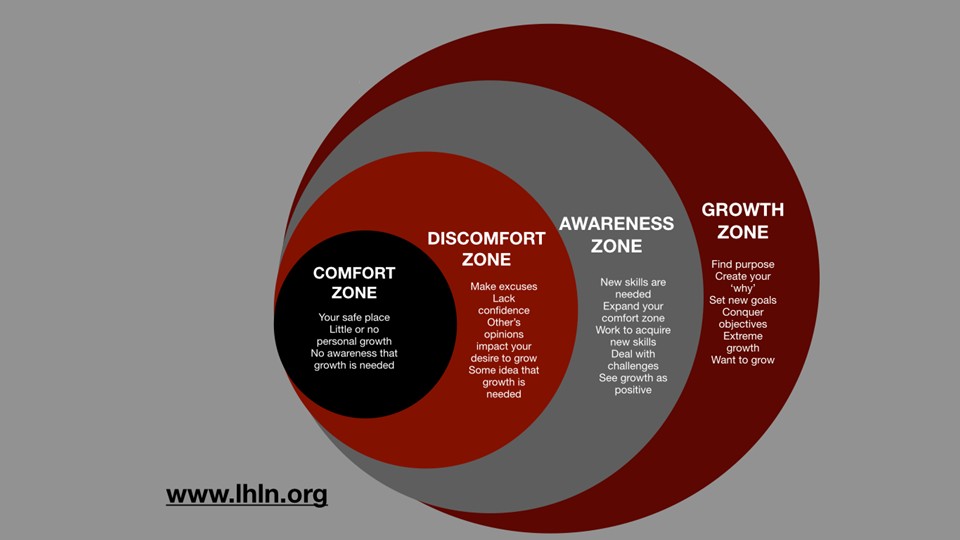Early in coaching school, the mentor coach warned us against asking questions which would sound like interviewing rather than coaching.
Since then, the backburner of my mind has been churning, given that both coaching and interviewing involve:
* following a certain flow or structure
* asking open-ended questions (tip: tune in to the “What” questions)
* actively listening to the responses
* maybe empathizing with the interviewee (say, a doctor with a cancer patient)
* seeking improvement (say, a training needs analysis)
* asking a follow-up query
* forming conclusions
So what is the essential difference between the two? Because when we think we’re coaching, we may actually be interviewing.
I suppose this question resurfaced due to the barrage of media interviews about the current flood control controversy. I’ve listened to journalists interviewing senators and lawyers, and to legislators grilling contractors perceived as corrupt. But no one can say there was coaching.
So here’s my take: the difference is in the intent. Generally, the purpose of interviews is information, whereas that of coaching is transformation.
More to the point, another mentor coach gave me this valuable tip: where do you want the conversation to go?
If you are just collecting data and the coachee remains the same, then it’s an interview. It’s just a static exchange; the conversation is going nowhere.
But if you are facilitating the client’s thinking process such that you are drawing awareness and insights, then you are bringing the client forward to his expressed goal.
That doesn’t mean you won’t ask about his context, but the hidden trap of bring curious is to be bogged down with details. I find it a delicate balance and that’s why I appreciate the coaching mindset of “what is this really all about?”
And there you go. Are you after information or transformation? Are you looking for data or insight? This spells the difference between a journalist and a coach.
One piece of wisdom I love from Marcia Reynolds is that when you see the coachee struggling with a well-posed question, that is when learning is happening.
However, our tendency is to worry that we are putting the coachee through a wringer, even to the point of interrupting the sacred silence. The coachee may be spared of further pain, but we have just aborted the transformative process.
What is helping me is to see discomfort as a zone. Sure, it’s there, but once both coach and coachee cross the discomfort zone (some diagrams call it the fear zone), there is growth.
That is why I also see discomfort as a friend. It’s that genuine friendship that dispenses tough love in that we care for the coachee to ask the difficult questions so he can gain insight, awareness and a more helpful way of thinking.
So the next time your coaching conversation has hit some discomfort, hooray! Ride it out. Be comfortable with the discomfort. Resist the temptation to “save” the coachee.
Something beautiful is about to happen.
I was listening to a podcast and heard someone blurting, “Please don’t appoint a leader who does not love people!”
I can relate. I’ve seen supervisors who believe that after issuing orders, fixing machines and delivering reports, their job is done.
That’s so far from the truth. Such supervisors should not be surprised if their people are not engaged and just giving them the minimum. Who can blame them? As far as they can see, their leader seems to be merely going through the motions. He might as well be a machine himself.
That’s why technical leaders need to know how to love their people.
I’m not talking about the mushy, fuzzy emotion. I refer to a genuine interest in the personal well-being and professional growth of the folks under your wing. If you see them as tools to achieve KPIs, you will indeed get tools: cold and hard.
I know it’s not easy to teach leaders how to care. I wonder if the ability to love people is nature, nurture or both. There seems to be that rare breed of leaders that have amazing charisma and natural empathy, while a larger number can very well come from Mr. Spock’s planet.
So here are some thoughts in being a leader who loves his people:
• Switch from task- to social orientation.
• Reframe how you see people.
• Act your way to the feeling.
• Imagine if the situation were reversed.
• Give a piece of yourself.
• Practice active listening.
• Be appreciative in public.
• Reprimand in private.
• Be a mentor, even for a short while.
The adage goes: people don’t care what you know until they know that you care. Be the leader who delights in his team and the team will delight in their jobs. They certainly don’t want to miss a day working with you.
Last tip: If you’re a business owner about to hire someone for a leadership position, ask yourself, “Does this candidate love people?” You may be saving yourself a lot of headaches – and heartaches – down the line.
# I’m Coach Nelson. I’ve been helping leaders and managers to be more confident, empathic and effective. Email me (nelsontdy.com@gmail.com) me for a discovery call.
About ten years ago, my boss told me, “Nelson, I’m revamping our organization. I want you to head one of our factories.”
I froze. Sure, I had an engineering degree, but I was into industrial sales at the time. What if I handled the factory and the workers didn’t like me? What if I failed in delivering production targets? What if… what if?
So I told my boss, “I’ll think about it.”
Two weeks later, my boss had enough of my dilly-dallying and told me, “Nelson, I believe in you. Go run the factory.”
Since he put it that way, I accepted my new assignment, still with trepidation. Did I really have what it takes to run this operation? I felt so much like a fraud.
But you know what? It wasn’t as bad as I thought. I enjoyed my stint as plant manager. The workers were cooperative and we generally met our KPIs. Three years later, I was given a second factory to run.
Then it hit me. I didn’t believe in myself. But my boss did.
See, if you’re struggling with imposter’s syndrome, perhaps you need someone to believe in your more than you believe in yourself.
Take a closer look at those blockbuster movies. First you see the self-doubting hero, then a wise mentor boosting his spirits until the hero wins at the end. Think Luke Skywalker and Obi-Wan Kenobi.
So here are some reflection questions:
1. What is holding you back from believing in yourself?
2. Who believes in you more than you believe in yourself?
3. What are his or her reasons for doing so?
4. What do those reasons tell you about yourself?
5. What new thinking will help you believe in yourself?
Want to be coached and be free from imposter’s syndrome? DM me and we’ll explore through a discovery call.
If you have watched the movie Inside Out 2, you may have missed a brilliant line.
You’d recall that Anxiety has taken over the control panel of Riley’s emotions. He frantically pushed so many buttons that he drove Riley into a panic attack. Joy stopped Anxiety, who contritely said, “I was just trying to protect her.”
Get it? Instead of seeing anxiety as an enemy, maybe we should see it as a friend. Yes, it can be a somewhat distressing friend. After all, who enjoys a queasy stomach, sweaty palms and that powerful urge to flee?
If we see anxiety as something we need to suppress, deny, crush or avoid, we will keep berating ourselves as hopeless worry warts. At the extreme, we resort to anti-anxiety medication only to suffer serious side effects, which raises even more anxiety!
But anxiety can be a well-meaning friend, nonetheless.
It helps to imagine anxiety as this pesky blinking red light on your dashboard. Without it, you’d be speeding along the highway yet unaware you’re running out of gas or your radiator is overheating. That pesky red light is really out for your best interests.
In much the same way, anxiety wants to protect you from something. You haven’t given it conscious thought, so anxiety is that blinking red light to call your attention.
For example, you’re stricken with fear as you’re about to give a make-or-break business presentation. Perhaps that fear is “protecting” you from the pain of embarrassment (“what if I mess up?”), rejection (“what if the audience doesn’t like me?”) or failure (“what if the decision-maker turns me down?”).
I’ve come up with C.A.L.M. to show how reduce, even remove anxiety.
C is Cease struggling. Imagine your struggle with anxiety as a tug of war. Anxiety is at one end of the rope, trying to pull you into some emotional abyss. Then there’s you on the other side, resisting the pull. This battle of wits and willpower can be tiresome, not to mention endless.
But what if you let go of the rope?
A is Adjust your view of anxiety. I recently learned about acceptance and commitment therapy (ACT) and in particular, willingness. I’m not a psychotherapist and I just skimmed the surface of ACT, but what I understand is that instead of fighting the anxiety, make peace with it. Remember, anxiety may just be a well-meaning protector.
But protecting you from what?
I will get to the last two components in a future post.
* I’m Coach Nelson. I help people reflect, be self-aware, reframe their thoughts and move towards what is positive and possible. If you’re interested in my coaching services or L&D courses, drop me a line via nelsontdy.com@gmail.com
As I write this, January 1, 2025 is only 10 hours old. We are brimming with optimism, plans, and cheer.
But what of January 10? Or the rest of the year, for that matter?
Here’s a hack: celebrate each day as if it were New Year’s day!
Yes, you read that correctly. Think about it: each morning is the first of the next 365 days of your life. That makes each day a New Year’s day!
If you were to visit my personal desk, you’d see the calendar (photo) permanently set on January 1st. Psychologically, that triggers me to:
1. Continue the sense of optimism for the rest of the day. For some reason, when the clock strikes 12 at New Year’s Eve, we have this giddy expectation that the future will be better and brighter.
Mr. Spock may question the rationality, but that’s the way we are. We want to believe that the best is yet to come. But why limit that on January 1st? Why not have that can-do mindset even if (when?) the inevitable challenges set in?
2. Connect with family. I heard some celebrities expressing their new year’s resolution of spending more time with family. That’s good, but if it’s just that, don’t be surprised when 2025 ends and we regretted not keeping that promise.
The solution is to “calenderize” it. Take out your planner and plug in dates when you will do just that: visit your folks, have lunch or dinner together, or do on a road trip with siblings and cousins alike. If we enjoyed the holiday due to the family bonding, why not spread out the good vibes until the next Christmas?
3. Create a new life plan. Did I say new year’s resolutions? Each end-year I would map out what I’d like to accomplish in the following year, such as spirituality, self-development, business, relationships and so on. If you fail to plan, you plan to fail.
So don’t go for resolutions that you solemnly vow on January 1st only to abandon by January 8th. Boil them into aspirational goals, process goals, and outcome goals. Example:
Aspirational goal: get in better shape
Process goal: eat healthier
Outcome goals: include vegetables in at least 15 out of 21 main meals per week (breakfast, lunch, and dinner).
So what are we waiting for? Cheers to your next 365 days!
I grew up in an era when teaching was done through old-fashioned rote and exams. That’s why I found joy in using videos in my training. I know it’s pretty common now, but I also discovered a few things as I did this on different demographics.
I give workshops to the department heads and their supervisors in the two factories I used to lead as Plant Manager. To avoid monotonous lectures, I would run a two- to three-minute clip from a movie and ask the participants what they learned from the clip.
My perception is that the heads were more insightful and observant than the supervisors. Specifically, the heads were able to discern the moral or principles of the story within the clip, whereas the supervisors tended to re-tell the story itself (“this character did this and said that”) without digging what the story wanted to convey.
Was it because the heads were better educated? Had higher IQs? Were more articulate? I don’t want to judge without empirical data. But the gap in mental reflection got me to reconsider how I would use videos as learning tools.
Lessons:
1. Choose videos that tell stories than lectures. For example, when I gave a workshop about empathy, I used a short clip from Inside Out (see photo) rather than a talking head from Youtube. People tend to be more engaged when they see how something is done rather than process abstract concepts.
2. Don’t give the generic instruction “I’m going to show you a video. Then you share what you have just learned.” That’s vague. For certain people, how would they know what to look for, let alone learn? Instead, try “I’m going to show you a video. Observe what the characters did and said. Then tell us what you have seen and heard, and what lessons you have picked up from there.”
3. Don’t trust the participants’ memory. I made the mistake of letting them just watch the video without taking notes. The result was either vague feedback or worse, blank stares. Unless they have perfect recall, provide pen and paper. Ask them to jot down their observations and insights as they streamed into their consciousness.
4. Better, have slides ready that show the key words and body language you want to highlight from the video.
Going back to the Inside Out clip to teach empathy, instead of saying, “Do you recall what Sadness said to Bing Bong that made him feel better?”, flash a brief transcript such as what Sadness told Bing Bong, “I’m sorry they took your rocket. They took something that you loved. It’s gone… forever.”
When you read the words with the same pathos, the impact will be deeper. Then ask them to comment on what Sadness was doing.
Also, flash screenshots that show Sadness sitting next to Bing Bong (mirroring). Don’t miss that subtle gesture of her putting her hand gently on his leg.
Boredom happens when we lose our appetite for things that used to energize us such as a job or a relationship. Strangely, we can be bored even while we are busy.
Beating boredom is more of a process, a journey, an inner transformation. It is a golden opportunity to find out what we really value.
Most people suppose that the opposite of boredom is excitement. Personally, I have discovered that the opposite of boredom is meaning. There are people who don’t mind difficulties and drudgery as long as they know that they are making a difference in the world.
Imagine two bakers. One complains, “I do the same thing day in and day out. Buying yeast, kneading dough, slaving in front of this hot oven. What’s the point of it all?”
The other relishes each working day and says, “I get to feed the world. I get to help a child create memories of the delicious sandwiches only his mom can make. I get to bring family members to bond around a good breakfast.”
The second baker sees meaning beyond the physical stuff of yeast, dough and oven. Because of that, he is hardly bored.
You may be doing something repetitious, perhaps even menial. But look for meaning in whatever you do. Happiness is a by-product of a meaningful life. Pursue happiness and it will elude you. But pursue meaning and boredom will give way to joy!








September 4, 2025
0 Comments